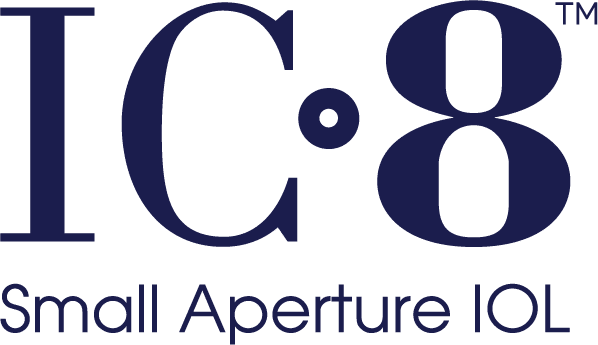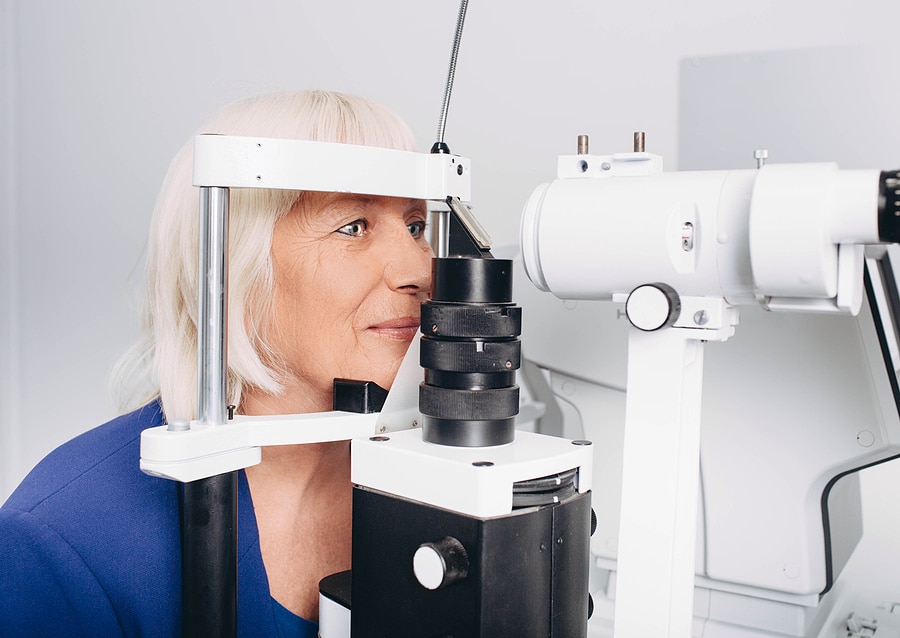If you’re over age 50, you might be thinking more about your overall health and wellbeing, including your eyes. Even if you’ve never needed vision correction before, you might be noticing changes in your vision. You may find yourself becoming more reliant on reading glasses and thinking about what comes next. “Will I develop a cataract?” “Do I already have one?”
These are natural questions, particularly considering that at some point, most of us will be diagnosed with a cataract. Age-related cataracts are caused by normal changes in the eye and by age 65, at least half of us will have one.
Fortunately, most cataracts grow very slowly and don’t interfere with vision in the early stages. The only way to know for sure if you have a cataract is to get a comprehensive eye exam by a qualified eye doctor. That, of course, involves vision tests. Many of them you may be very familiar with. Others you may not be.
How exactly is a cataract diagnosed? What tests will the doctor perform and what should you expect? We aim to clear up the mystery surrounding eye exams and cataracts.
What is a cataract?
The lens of the eye, located right behind the iris (the colored part of the eye), is normally transparent. As we age, proteins in the eye can break down and clump together, causing cloudy spots on the once clear lens. These spots are called cataracts.
Cataracts usually start out quite small and have little effect on vision, but as they grow larger, they may cloud more of the lens, leading to more noticeable symptoms. Eventually, if left untreated, cataracts can cause severe vision loss. Fortunately, cataract surgery is one of the most common surgeries performed today. Early detection is important, though. That’s why an annual eye exam, while valuable at all ages, becomes even more critical as we age.
What tests will my doctor perform to evaluate my eyes for a cataract?
Understanding what to expect at an eye exam can help you to be prepared with any information you may be asked to provide. It can also ease any anxiety about the unknown. While individual doctors will have their own processes for collecting information and may administer tests in different orders, some commonalities are likely. Here’s what to expect at an eye exam:
Questions, questions, questions
To start, your eye doctor will probably ask you to fill out forms to help him or her assess your overall health history. It will likely include questions about your lifestyle and any underlying conditions that may affect your vision, for example: Are you a smoker? Do you have diabetes? High blood pressure? Your doctor will also want to know about any medications you are taking as some pharmaceuticals do have an effect on eye health. You may also be asked about the health of your immediate family members, including specific questions about eye diseases such as macular degeneration and glaucoma.
The history of your eyes
Your doctor will want to know about your vision history. Have you had any recent changes in your vision? Have you been diagnosed with any eye diseases? Have you had any previous eye treatments, surgeries or injuries? This is where being prepared is helpful. Knowing dates and details beforehand can make this an easier process for you and for your doctor.
Visual acuity test
Also called a refraction test, a visual acuity test determines the sharpness or clarity of your vision both close up and far away. You know that classic eye chart? The one with the large capital letters at the top and smaller letters at the bottom? It may look simple, but it’s actually essential for evaluating how clearly you can see at different distances.
If your doctor discovers that you have a visual acuity issue such as nearsightedness, farsightedness or astigmatism, he or she will probably have you look through an instrument known as a phoropter. A phoropter lets your doctor test your eyesight through different lenses to find the right strength of glasses or contact lenses to improve your vision.
Slit lamp test
A slit lamp is a powerful microscope that your doctor will use to examine the structure of your eye under magnification. A wide range of eye conditions and diseases can be detected using a slit lamp, which enables your doctor to examine your cornea, iris, lens and the fluid chamber between the cornea and the iris. Yellowing of the lens, fissures or white opacities may indicate the presence of cataracts, so this exam is of particular importance as we age.
Dilated eye exam
A dilated eye exam, also called a fundus exam, allows your doctor to see the internal parts of your eye. You will be given eye drops to dilate your pupils. This may make you more sensitive to light because more light is entering your eye, but it gives your doctor a good view of your eye’s internal structure, including your optic nerve, your retina, and the blood vessels that nourish it. This exam is especially important for your doctor to evaluate your eye for the presence of cataracts. Your pupils will probably remain dilated for a few hours after the exam, so you may want to consider having someone drive you to your appointment.
Newer technologies known as digital retinal imaging machines provide a comprehensive view of the retina without the need to dilate the eye. Your doctor will determine if this type of exam is right for you.
Pressure test
Non-contact tonometry is a procedure your doctor will use to determine the fluid pressure inside your eye. This is known as intraocular pressure (IOP), and it’s important in evaluating if you have or are at risk of glaucoma.
Other tests
Your doctor may perform other tests such as tests for color blindness, depth perception, or peripheral vision. Depending on your unique situation, your doctor may also perform other specialized tests.
The IC-8 Lens Advantage
If you’ve been diagnosed with a cataract and are considering cataract surgery, be sure to discuss replacement lens options with your doctor. Learn more about the IC-8 lens. The IC-8 lens offers many advantages over traditional (monofocal) and multifocal IOLs. It is designed to provide a natural range of vision from near to far, including mid-range vision needed to read a computer screen. With the IC-8 lens, one can achieve continuous and seamless vision at all distances.



